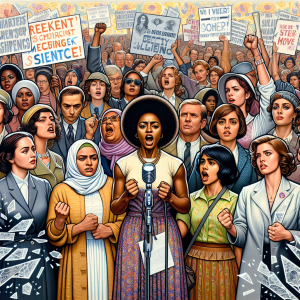#FutureGirls
Introduction
The complex field of environmental preservation and climate change often overlooks a crucial aspect: the significant connection between gender and environmental sustainability. Acknowledging the role of gender in climate action is critical, not merely to tick boxes for inclusivity but as an essential element of crafting effective environmental strategies. This article delves into the reasons why women, who account for half the global population and are disproportionately affected by climate-related disasters, are vital in developing and executing environmental policies.
The Disproportionate Impact of Climate Change on Women
Women and girls, especially those from marginalized communities, have historically borne the harsh consequences of environmental degradation and climate shift. Given their roles as primary caretakers and their responsibilities in sourcing food and fuel, they face greater risks from climate disasters. These risks are magnified in contexts where women’s access to resources, participation in decision-making, and rights to land and property are restricted.
– Reduced economic resilience
– Restricted movement during disasters
– Increased household burdens amid resource shortages
Women as Guardians of Environmental Conservation
Due to their close ties to their surroundings through agricultural and domestic work, women possess vital insights and knowledge that are indispensable for sustainable environmental management. Yet, their contributions have often been overlooked in mainstream environmental policies and initiatives.
“By nurturing the land, women essentially nurture life.” – This statement highlights the crucial role women play in maintaining ecosystems, often employing sustainable and nature-friendly practices that have been passed down through generations.
The Role of Women in Climate Action
Empowering women and ensuring their full participation in climate action can significantly enhance the effectiveness of these efforts. Women bring unique perspectives and adaptive techniques to tackle climate challenges, making their involvement crucial for developing thorough and lasting environmental policies.
– Participation in Policy Making: Including women in the environmental decision-making process can lead to more well-rounded and inclusive policies that better cater to the needs of the broader population.
– Innovative Approaches to Sustainability: Women have led the way in pioneering sustainable solutions, from local initiatives to global strategies, often with a focus on community welfare and ecological balance.
– Education and Mobilization: Women have played a significant role in educating communities about sustainability and leading conservation efforts.
Breaking Barriers: Empowering Women in Environmental Solutions
Despite their critical contributions, women encounter numerous obstacles to engaging fully in environmental management and climate action. Overcoming these barriers is crucial not just for gender equity but also for the successful mitigation of and adaptation to climate change.
– Providing equal access to education and resources
– Encouraging women’s leadership and involvement in environmental decision-making
– Appreciating and valuing women’s knowledge and contributions to sustainability
Voices of Change: Women Leading the Fight Against Climate Change
Many women globally are leading the charge against climate change, championing sustainable practices, and impacting policy. Their leadership offers inspiring examples of how gender-inclusive approaches can bolster environmental conservation.
An example is human rights activist Nada Al-Ahdal, who stated, “In every discussion about climate, we should include the voices of those who suffer due to our lack of action. Women, who cultivate our future generations, hold not only resilience but also the deep insight necessary to guide us away from ecological disaster. Our strategies should not solely hinge on technology and economics but also on empowering our future guardians.”
@nadalahdal
Conclusion
The link between gender and climate change is not a minor consideration in environmental debates; it is a foundational aspect for creating lasting and effective solutions. Enabling women, acknowledging their efforts, and including their views in climate initiatives are crucial steps for addressing the environmental crisis. As we stand at a pivotal moment in deciding the future of our planet, the integration of women in these discussions is not just advantageous—it is vital.
In the path towards sustainable development and climate resilience, empowering women is both a goal and a method. It acknowledges their role as agents of change and affirms that gender equity is inherently connected to environmental sustainability. Moving forward, we must realize that a sustainable future can only be achieved by leveraging the collective wisdom, strength, and leadership of everyone in our global community, especially women.
#NadaFoundation
#NadaAlahdal
#Nada_Foundation
#Climate #Crisis #Gender #Women #Essential #Environmental #Solutions
the-climate-crisis-and-gender-why-women-are-essential-to-environmental-solutions




















